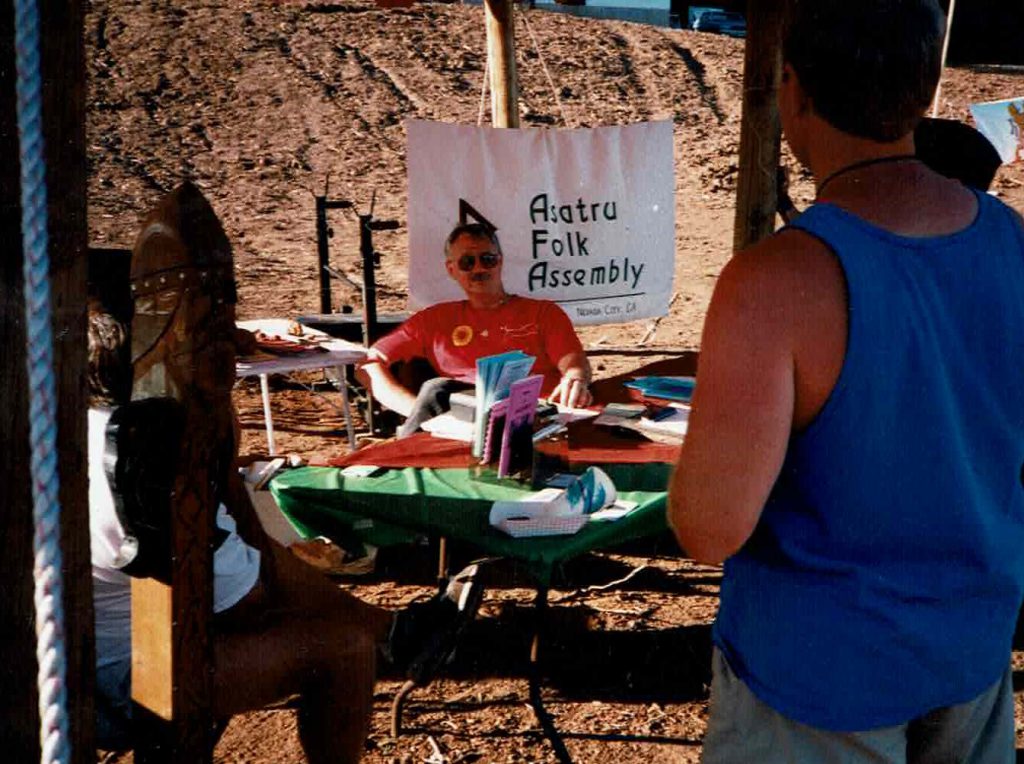
Drengskapr: A Code of Honor
By Stephen McNallen from THE RUNESTONE spring 1995 #11
Christ’s disciples wanted to know how to pray, and their master gave them the Lord’s Prayer. Asatruar, on the other hand, want to know how to LIVE – and the answer from Asgard is not a prayer for the bended knee, but rather a code for the fearless and fair: DRENGSKAPR, in the ancient tongue of the Northlands.
To understand this concept, we have first to grasp the root word from which it springs. A DRENG was a gallant lad, a young man who was a member of a warrior band or some other relatively small group where one had to be able to depend on others for livelihood or even for life itself. The ship’s crew, the merchant guild, the military unit – all these were examples of that tightly knit in-group. From the nature of these bands, we can infer a lot about what drengskapr must have been in the days of our ancestors, and what it must be to us today.
The dreng must be strong and courageous, but that pretty much goes without saying. These were expected during the Viking Age. Beyond bravery, there were other traits, most of which seem to revolve around how the individual related to the others in the group. Honesty, even to the point of bluntness, was preferred because in the war band of the ship’s crew there was no place for hidden animosities that might boil over at a crucial moment and bring disaster to all. Likewise, a certain cheerfulness or at least a stoic acceptance of hardship helped to maintain morale when times were tough – when the group’s endeavors were not prospering, when the ship had to be hauled over long portages, or when rations were short. Generosity, always admired in Norse society, was even more important for the dreng. One who shared with his fellows – a meal, a knife, a bowstring – furthered the survival of all.
All of these characteristics spring from the dynamic of small teams surrounded with threats to their safety and success. The idea of drengskapr uses these very practical survival traits as a springboard to a larger nobility, a highness of mind, the opposite of all that is lowly or niggardly or petty. It is contrary to the viking stereotype of a cruel, blood-soaked savage with no moral code. True, not every viking followed the high standards of the dreng, but the ideal was there, and all could aspire to it.
Drengskapr implies certain duties to a friend, but also to a foe. The Germanic tribesmen amazed the Roman soldiers by picking them up and dusting them off after a skirmish. Today, we might well consider this as going too far; the survival of the group has to be considered. But it does raise the question of just what we owe our enemies.
The Christians say we should love our enemies, and this is where they go wrong. We don’t owe them love – but we owe them respect in the measure they deserve it. The valor and skill of our foes does us honor, and we should honor them in return.
In the mainstream culture which surrounds us, drengskapr is rare. You can find vestiges of it in the football team and the Army unit, but in general we live in a world that has turned it’s back on noble conduct. It’s widespread revival may have to await tougher times, when the exigencies that called it into being are once more a part of daily life. And it may be that drengskrapr was always for a special group, an adventurous elite. But who can deny that our world needs this model of fairness, generosity, and bravery? And where can it start, if not with us, as we go about our lives each day?
